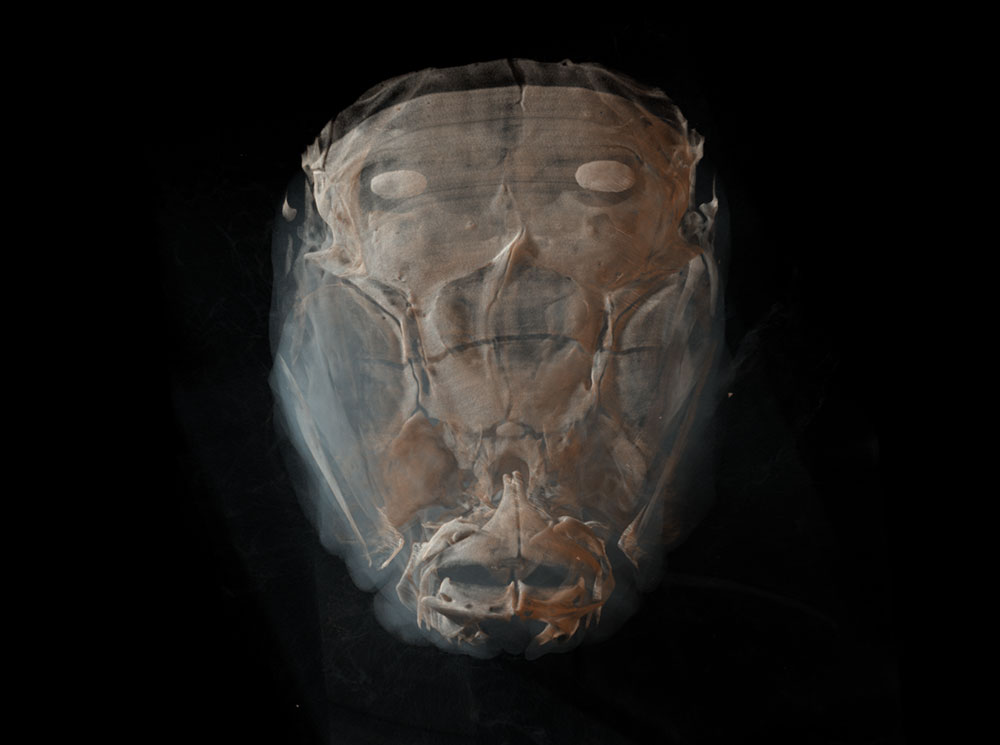
New ways to regenerate bone emerge from the adult zebrafish face. (Image by Sandeep Paul and Seth Ruffins)
Scientists have long believed that the processes required for embryonic development are recapitulated during the regeneration of damaged body parts, such as fractured bones. In a new study published in Development, USC Stem Cell researchers Sandeep Paul, Simone Schindler and colleagues use the regeneration of the zebrafish jawbone to show that this is not necessarily true.
During the regeneration of the zebrafish’s lower jawbone, cartilage tissue initially bridges the fracture or gap. In the cells of this repair cartilage, known as chondrocytes, genes become activated that are normally associated with bone-forming cells called osteoblasts. These genes enable the chondrocytes to produce the hard calcium phosphate crystals that form bone during repair — a task mainly assigned to osteoblasts during embryonic development.
The researchers found that the unusual bone-producing repair chondrocytes originate from a thin lining of stem cells surrounding the surface of bones. Normally, these stem cells would help maintain bone mass throughout life. However, upon injury, the stem cells are instead instructed to make cartilage that helps heal the bone. A critical signal that causes stem cells to shift from making bone to cartilage during repair is a gene called indian hedgehog a (ihha). Accordingly, zebrafish lacking ihha are unable to make cartilage in response to bone injury, and they heal poorly.
In the future, the research team hopes that these lessons learned from zebrafish jawbone regeneration might hold promise for effectively healing severe human bone fractures — which pose a challenge to current therapeutic approaches. In preliminary data, they have found that similar bone-producing cartilage cells may be present in mice undergoing very large-scale bone repair.
The project brought together the USC Stem Cell laboratories of Gage Crump and Francesca Mariani, who received a USC Regenerative Medicine Initiative (RMI) Award to support their multi-investigator research collaboration into bone repair.
“USC’s investment in Gage and Francesca’s innovative research collaboration is well-rewarded in the findings here and in the external research funding to come,” said Andy McMahon, chair of the Department of Stem Cell Biology and Regenerative Medicine.
“Traditionally, the therapeutic approach to healing bone has been to use bone cells or bone-like materials,” said Mariani. “This work suggests that, at least for large-scale repair, stimulating stem cells to make a special kind of cartilage might be more effective.”
Crump added: “An exciting finding from our work is that, somewhat counterintuitively, cartilage is critical for healing full thickness bone injuries. By understanding how this bone-producing cartilage is generated in the simpler zebrafish model, we hope to find ways to create more of this unique cartilage tissue in patients to better heal their bones.”
Additional co-authors include Dion Giovannone and Alexandra de Millo Terrazzani from the Eli and Edythe Broad Center for Regenerative Medicine and Stem Cell Research at USC.
Support also came from a California Institute for Regenerative Medicine New Investigator Award and the National Institutes of Health (R21DE023899 and R21AR064462).
by Cristy Lytal